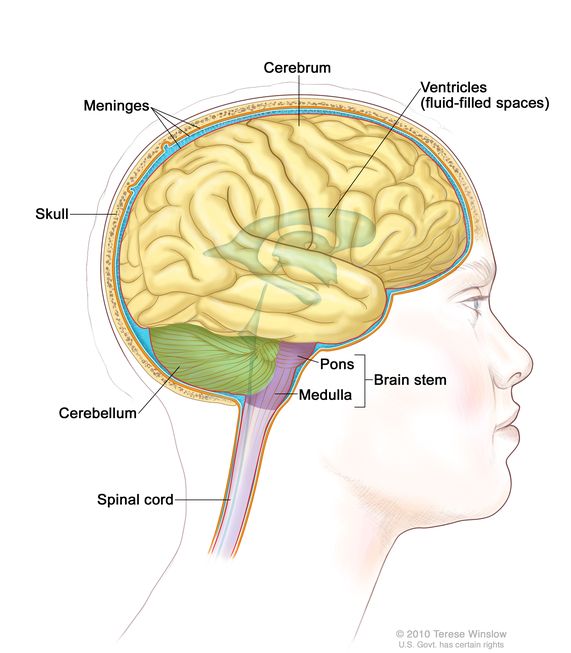brain
(brayn)
The organ inside the head that controls all body functions of a human being. Made up of billions of nerve cells, the brain is protected by the cranium (the bones that form the head). It is made up of three major parts: the cerebrum, the cerebellum, and the brain stem. The cerebrum is the largest part of the brain and controls thinking, learning, problem solving, emotions, memory, speech, reading, writing, and voluntary movement. The cerebellum controls fine motor movement, balance, and posture. The brain stem controls breathing, heart rate, and the nerves and muscles used to see, hear, walk, talk, and eat. The brain stem connects the brain to the spinal cord. The brain and the spinal cord make up the central nervous system.
